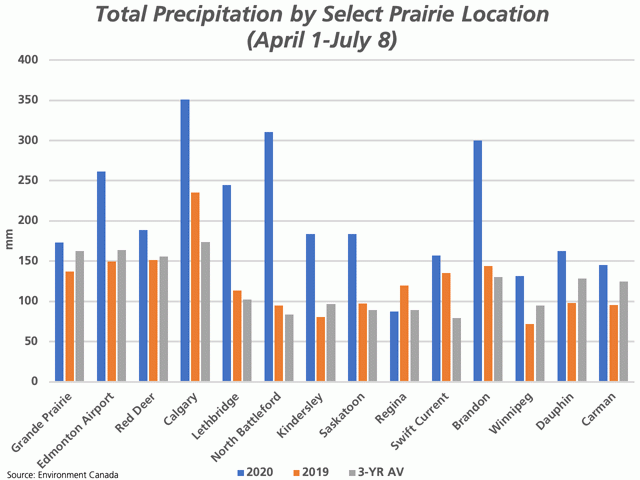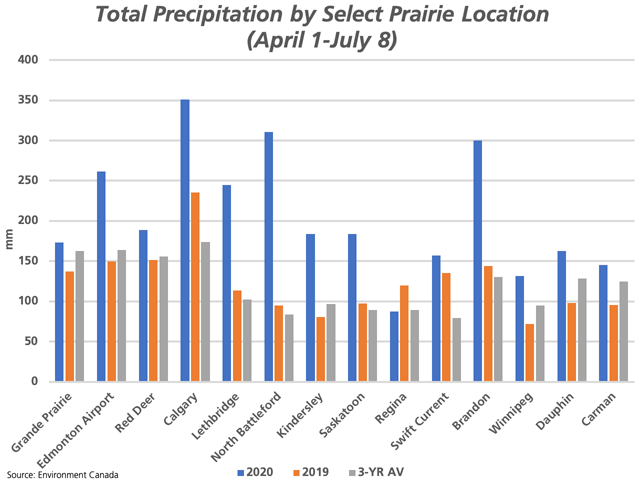Canada Markets
Cumulative Precipitation for Select Prairie Locations
The driest area on the prairies is seen shrinking in size on AAFC's Percent of Average Precipitation map, while the area of the prairies receiving from 150 to 200% of normal precipitation in the April 1 through July 8 period is growing in the Peace Region of Alberta, in areas surrounding Edmonton, surrounding Calgary, in northwest Saskatchewan and in a small area of southwest Manitoba.
Manitoba's Crop Report this week hinted at some areas that could use rain, while other areas are dealing with excessive moisture and forcing aerial application of fungicides. Saskatchewan's Crop Report this week notes that most of the province has seen some amount of rainfall in the week ended July 6, crop damage due to dry conditions was experienced in the southern and eastern part of the province. The area of the province where topsoil moisture is rated short to very-short dipped to 14% from the 20% reported in the previous week, the lowest reported in eight weeks.
P[L1] D[0x0] M[300x250] OOP[F] ADUNIT[] T[]
Since the release of Saskatchewan's Crop Report, excessive rain fell over the northern and western side of the province, with one example being North Battleford that received 155.3 mm or over 6 inches on July 7/8. DTN's Five Day Highs Compared to Normal chart shows a cooler pattern moving east into Saskatchewan, with the western prairies largely forecast to see highs range from 0 to 3 C below normal. In addition, more rain is forecast for the prairies in the seven-day window, favoring northern growing areas.
The attached chart compares April 1 through July 8 precipitation for select locations on the prairies for 2020, 2019 and the 2017-2019 average. Relative to recent years, cumulative rainfall in western locations continues to far exceed both 2019 and the three-year average. One exception is Brandon Manitoba, where excessive rainfall fell on June 28 and again on June 30, with Environment Canada reporting 189.4 mm or 7.5 inches between the two events.
Of the select locations, Regina is the only location where cumulative precipitation over this period is lagging both 2019 and the three-year average over this period.
Conditions ranging from too-dry to too-wet are bound to have detrimental effects on crop development and bears watching.
Cliff Jamieson can be reached at cliff.jamieson@dtn.com
Follow him on Twitter @Cliff Jamieson
© (c) Copyright 2020 DTN, LLC. All rights reserved.






Comments
To comment, please Log In or Join our Community .